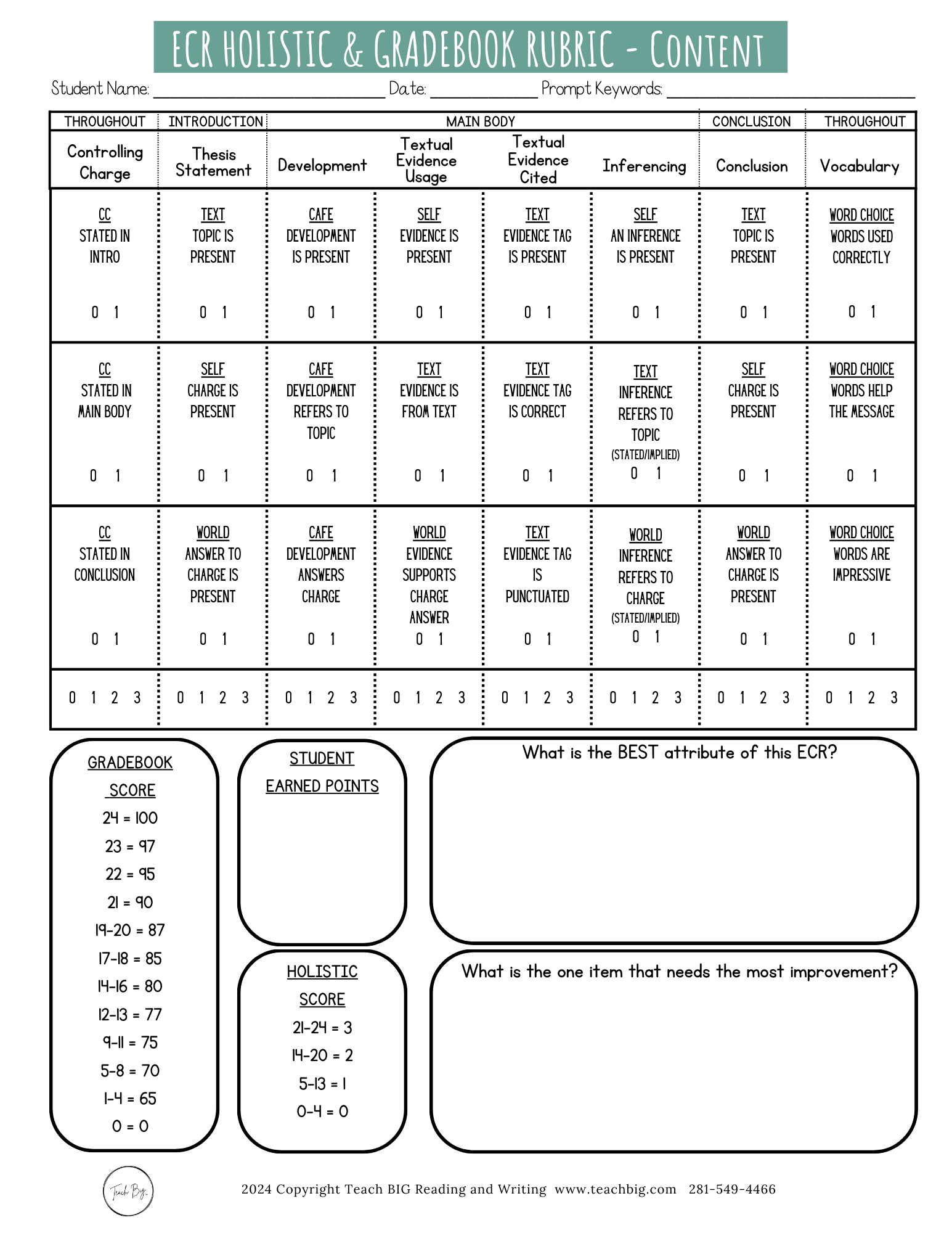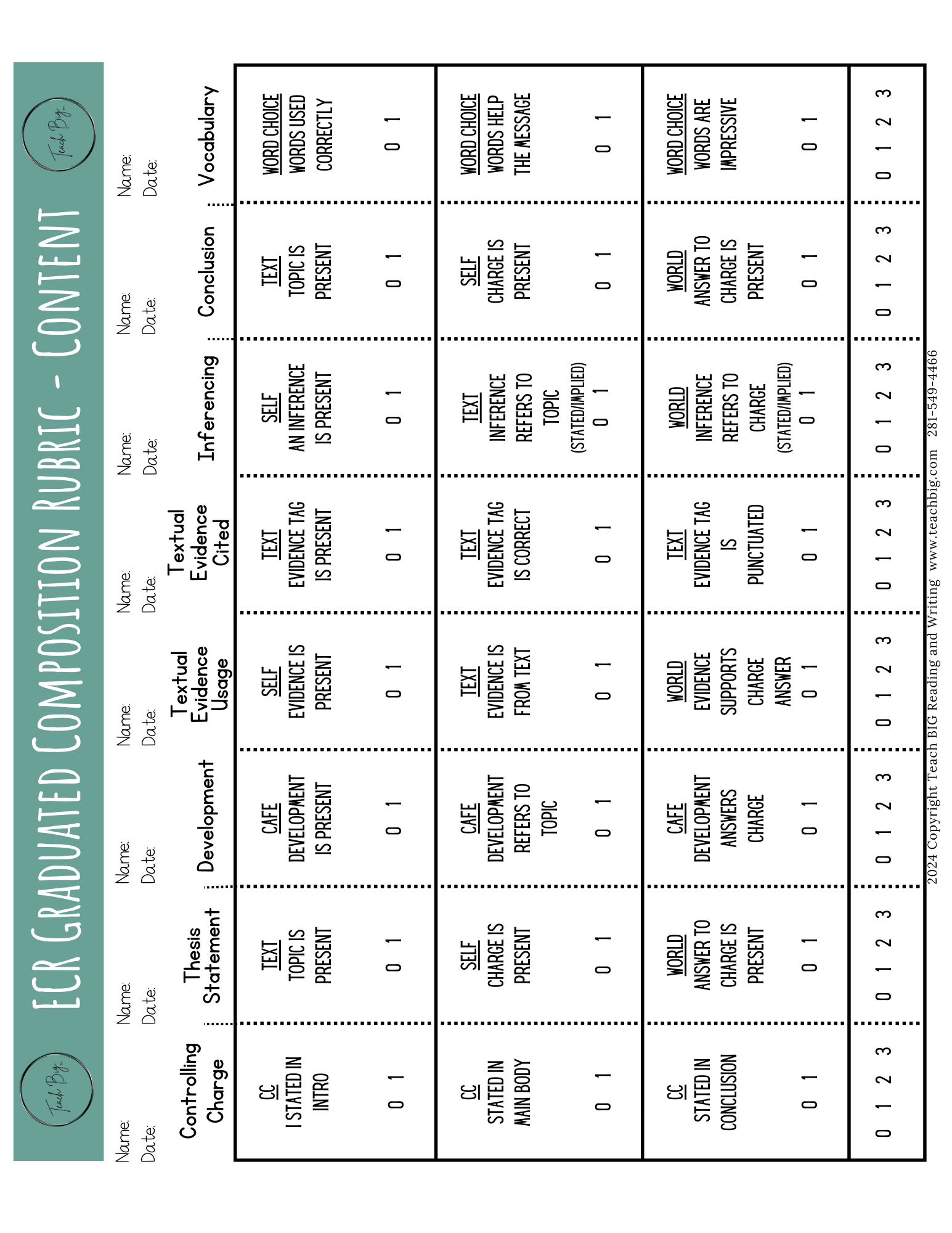TEA STAAR ECR Student Rubric
$4.00
Unit price
/
Unavailable
Couldn't load pickup availability
This student-friendly ECR Content Rubric for grades 3–8 simplifies the TEA STAAR rubric into clear language and eight key writing skills. Students use a 0/1 scale to track strengths and areas for improvement. The rubric can be used as a whole or cut into columns for targeted feedback over multiple assignments. Ideal for building writing confidence and clarity. For full training, visit TeachBIG.com or call 281-549-4466.




